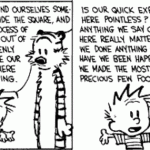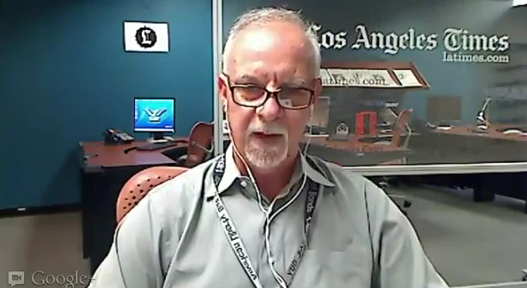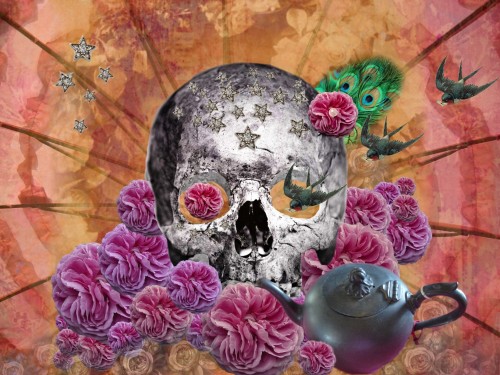1. Get Married
Death is no obstacle when it comes to love in China. That’s because ghost marriage—the practice of setting up deceased relatives with suitable spouses, dead or alive—is still an option.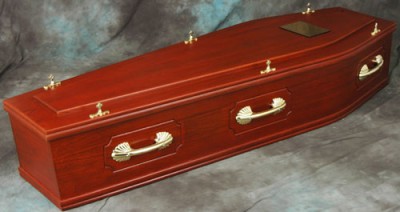
Ghost marriage first appeared in Chinese legends 2,000 years ago, and it’s been a staple of the culture ever since. At times, it was a way for spinsters to gain social acceptance after death. At other times, the ceremony honored dead sons by giving them living brides. In both cases, the marriages served a religious function by making the deceased happier in the afterlife.
While the practice of matchmaking for the dead waned during China’s Cultural Revolution in the late 1960s, officials report that ghost marriages are back on the rise. Today, the goal is often to give a deceased bachelor a wife—preferably one who has recently been laid to rest. But in a nation where men outnumber women in death as well as in life, the shortage of corpse brides has led to murder. In 2007, there were two widely reported cases of rural men killing prostitutes, housekeepers, and mentally ill women in order to sell their bodies as ghost wives. Worse, these crimes pay. According to The Washington Post and The London Times, one undertaker buys women’s bodies for more than $2,000 and sells them to prospective “in-laws” for nearly $5,000.
2. Unwind with a Few Friends
Today, most of us think of mummies as rare and valuable artifacts, but to the ancient Egyptians, they were as common as iPhones. So, where have all those mummies gone? Basically, they’ve been used up. Europeans and Middle Easterners spent centuries raiding ancient Egyptian tombs and turning the bandaged bodies into cheap commodities. For instance, mummy-based panaceas were once popular as quack medicine. In the 16th century, French King Francis I took a daily pinch of mummy to build strength, sort of like a particularly offensive multivitamin. Other mummies, mainly those of animals, became kindling in homes and steam engines. Meanwhile, human mummies frequently fell victim to Victorian social events. During the late 19th century, it was popular for wealthy families to host mummy-unwrapping parties, where the desecration of the dead was followed by cocktails and hors d’oeuvres.
3. Tour the Globe as a Scandalous Work of Art
Beginning in 1996 with the BODY WORLDS show in Japan, exhibits featuring artfully flayed human bodies have rocked the museum circuit. BODY WORLDS is now in its fourth incarnation, and competing shows, such as Bodies Revealed, are pulling in $30 million per year. The problem is, it’s not always clear where those bodies are coming from.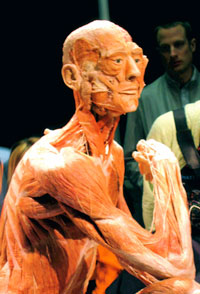
Dr. Gunther von Hagens, the man behind BODY WORLDS, has documented that his bodies were donated voluntarily to his organization. However, his largest competitor, Premier Entertainment, doesn’t have a well-established donation system. Premier maintains that its cadavers are unclaimed bodies from mainland China. And therein lies the concern. Activists and journalists believe “unclaimed bodies” is a euphemism for “executed political prisoners.”
The fear isn’t unfounded. In 2006, Canada commissioned a human rights report that found Chinese political prisoners were being killed so that their organs could be “donated” to transplant patients. And in February 2008, ABC News ran an exposé featuring a former employee from one of the Chinese companies that supplied corpses to Premier Entertainment. In the interview, he claimed that one-third of the bodies he processed were political prisoners. Not surprisingly, governments have started to take notice. In January 2008, the California State Assembly passed legislation requiring body exhibits to prove that all their corpses were willfully donated.
4. Fuel a City
Cremating a body uses up a lot of energy—and a lot of nonrenewable resources. So how do you give Grandma the send-off she wanted and protect the planet at the same time? Multitask. Some European crematoriums have figured out a way to replace conventional boilers by harnessing the heat produced in their fires, which can reach temperatures in excess of 1,832 degrees F. In fact, starting in 1997, the Swedish city of Helsingborg used local crematoriums to supply 10 percent of the heat for its homes.
5. Get Sold, Chop Shop-Style
Selling a stiff has always been a profitable venture. In the Middle Ages, grave robbers scoured cemeteries and sold whatever they could dig up to doctors and scientists. And while the business of selling cadavers and body parts in the United States is certainly cleaner now, it’s no less dubious.
Today, the system runs like this: Willed-body donation programs, often run by universities, match cadavers with the researchers who need them. But because dead bodies and body parts can’t be sold legally, the middlemen who supply these bodies charge large fees for “shipping and handling.” Shipping a full cadaver can bring in as much as $1,000, but if you divvy up a body into its component parts, you can make a fortune. A head can cost as much as $500; a knee, $650; and a disembodied torso, $5,000.
The truth is, there are never enough of these willed bodies to meet demand. And with that kind of money on the mortician’s table, corruption abounds. In the past few years, coroners have been busted stealing corneas, crematorium technicians have been caught lifting heads off bodies before they’re burned, and university employees at body donation programs have been found stealing cadavers. After UCLA’s willed-body program director was arrested for selling body parts in 2004, the State of California recommended outfitting corpses with bar code tattoos or tracking chips, like the kinds injected into dogs and cats. The hope is to make cadavers easier to inventory and track down when they disappear.
6. Become a Soviet Tourist Attraction
Russian revolutionary Vladimir Lenin wanted to be buried in his family plot. But  when Lenin died in 1924, Joseph Stalin insisted on putting his corpse on public display in Red Square, creating a secular, Communist relic. Consequently, an organization called the Research Institute for Biological Structures was formed to keep Lenin’s body from decay. The Institute was no joke, as some of the Soviet Union’s most brilliant minds spent more than 25 years working and living on site to perfect the Soviet system of corpse preservation. Scientists today still use their method, which involves a carefully controlled climate, a twice-weekly regimen of dusting and lubrication, and semi-annual dips in a secret blend of 11 herbs and chemicals. Unlike bodies, however, fame can’t last forever. The popularity of the tomb is dwindling, and the Russian government is now considering giving Lenin the burial he always wanted.
when Lenin died in 1924, Joseph Stalin insisted on putting his corpse on public display in Red Square, creating a secular, Communist relic. Consequently, an organization called the Research Institute for Biological Structures was formed to keep Lenin’s body from decay. The Institute was no joke, as some of the Soviet Union’s most brilliant minds spent more than 25 years working and living on site to perfect the Soviet system of corpse preservation. Scientists today still use their method, which involves a carefully controlled climate, a twice-weekly regimen of dusting and lubrication, and semi-annual dips in a secret blend of 11 herbs and chemicals. Unlike bodies, however, fame can’t last forever. The popularity of the tomb is dwindling, and the Russian government is now considering giving Lenin the burial he always wanted.
7. Snuggle Up with Your Stalker
When a beautiful young woman named Elena Hoyos died from tuberculosis in Florida in 1931, her life as a misused object of desire began. Her admirer, a local X-ray technician who called himself Count Carl von Cosel, paid for Hoyos to be embalmed and buried in a mausoleum above ground. Then, in 1933, the crafty Count stole Elena’s body and hid it in his home. During the next seven years, he worked to preserve her corpse, replacing her flesh as it decayed with hanger wires, molded wax, and plaster of Paris. He even slept beside Elena’s body in bed—that is, until her family discovered her there. In the ensuing media circus, more than 6,000 people filed through the funeral home to view Elena before she was put to rest. Her family buried her in an unmarked grave so that von Cosel couldn’t find her, but that didn’t stop his obsession. Von Cosel wrote about Elena for pulp fiction magazines and sold postcards of her likeness until he was found dead in his home in 1952. Near his body was a life-size wax dummy made to look just like Elena.
8. Not Spread an Epidemic
In the aftermath of natural disasters such as tsunamis, floods, and hurricanes, it’s common for the bodies of victims to be buried or burned en masse as soon as possible. Supposedly, this prevents the spread of disease. But according to the World Health Organization (WHO), dead bodies have been getting a bad rap. It turns out that the victims of natural disasters are no more likely to harbor infectious diseases than the general population. Plus, most pathogens can’t survive long in a corpse. Taken together, the WHO says there’s no way that cadavers are to blame for post-disaster outbreaks. So what is? The fault seems to lie with the living or, more specifically, their living conditions. After a disaster, people often end up in crowded refugee camps with poor sanitation. For epidemic diseases, that’s akin to an all-you-can-eat buffet.
9. Stand Trial
In 897 CE, Pope Stephen VI accused former Pope Formosus of perjury and violation of church canon. The problem was that Pope Formosus had died nine months earlier. Stephen worked around this little detail by exhuming the dead pope’s body, dressing it in full papal regalia, and putting it on trial. He then proceeded to serve as chief prosecutor as he angrily cross-examined the corpse. The spectacle was about as ludicrous as you’d imagine. In fact, Pope Stephen appeared so thoroughly insane that a group of concerned citizens launched a successful assassination plot against him. The next year, one of Pope Stephen’s successors reversed Formosus’ conviction, ordering his body reburied with full honors.
of church canon. The problem was that Pope Formosus had died nine months earlier. Stephen worked around this little detail by exhuming the dead pope’s body, dressing it in full papal regalia, and putting it on trial. He then proceeded to serve as chief prosecutor as he angrily cross-examined the corpse. The spectacle was about as ludicrous as you’d imagine. In fact, Pope Stephen appeared so thoroughly insane that a group of concerned citizens launched a successful assassination plot against him. The next year, one of Pope Stephen’s successors reversed Formosus’ conviction, ordering his body reburied with full honors.
10. Stave Off Freezer Burn
At cryonics facilities around the globe, the dead aren’t frozen anymore. The reason? Freezer burn. As with steaks and green beans, freezing a human body damages tissues, largely because cells burst as the water in them solidifies and expands. In the early days of cryonics, the theory was that future medical technology would be able to fix this damage, along with curing whatever illness killed the patient in the first place.
Realizing that straight freezing isn’t the best option, today’s scientists have made significant advances in cryonics. Using a process called vitrification, the water in the body is now replaced with an anti-freezing agent. The body is then stored at cold temperatures, but no ice forms. In 2005, researchers vitrified a rabbit kidney and successfully brought it back to complete functionality—a big step in cryonics research. (It may help in organ transplants someday, too.) But science has yet to prove that an entire body can be revived. Even worse, some vitrified bodies have developed large cracks in places where cracks don’t belong. Until those kinks get worked out, the hope of being revived in the future will remain a dream.
Complete Article HERE!




